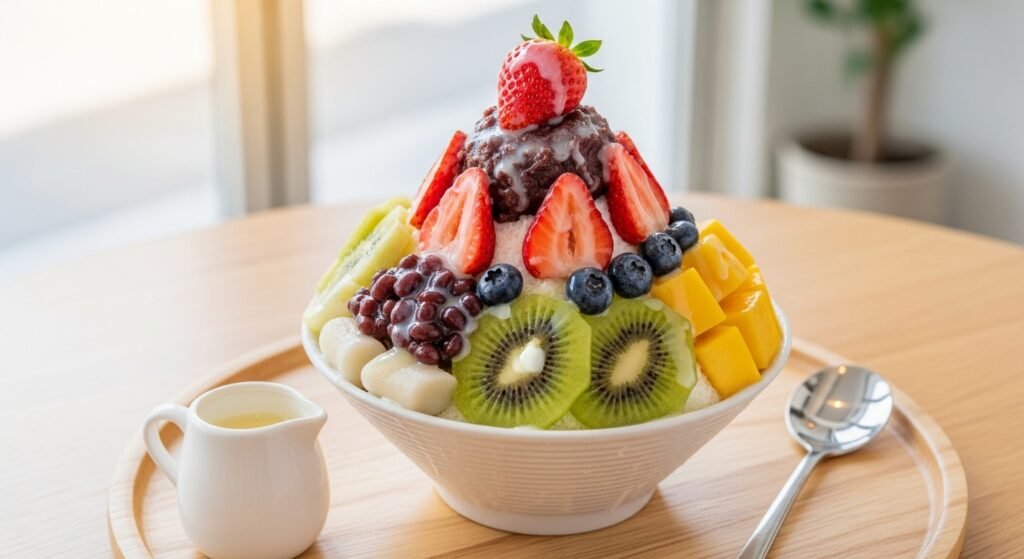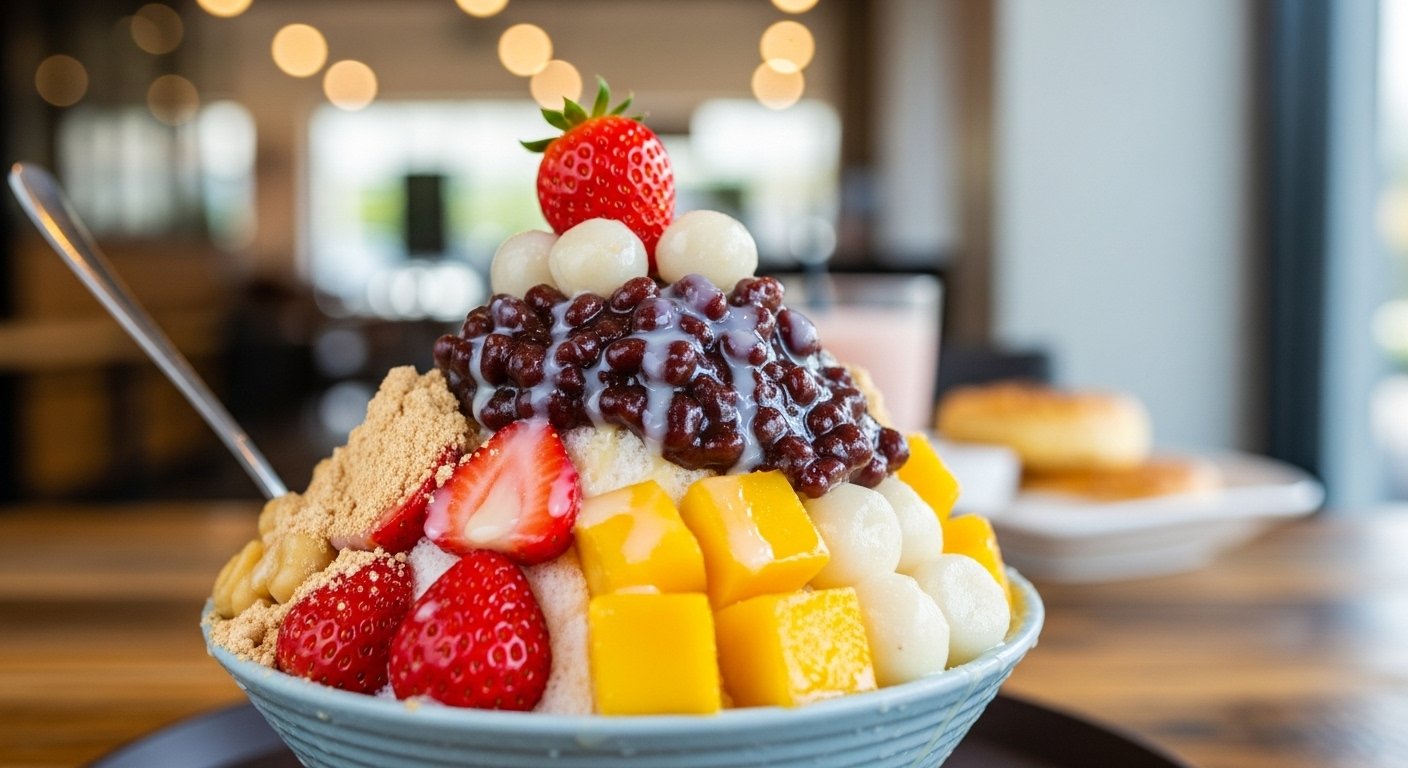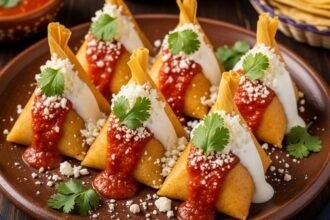When the weather is hot or you just want a fun treat, nothing hits the spot like bingsoo. This Korean shaved ice dessert is soft, cold, sweet, and totally loaded with fun toppings. Bingsoo (also spelled bingsu) has become a worldwide food trend, popping up in dessert cafes everywhere. But it’s more than just ice with syrup—it’s a flavorful food experience filled with textures, layers, and joy. Whether you’ve tried it before or are hearing about it for the first time, you’re about to become a bingsoo fan for life.
In this article, we’ll take a deep dive into what makes bingsoo so special. You’ll learn about its history, how it’s made, popular flavors, and fun variations. We’ll also share tips for making bingsoo at home, ordering it at a café, and adding your own twist to this cool dessert. We’ll even answer some common questions to help first-timers feel fully prepared to enjoy it. So grab a spoon and get ready to explore everything you should know about the cold, creamy, dreamy treat known as bingsoo.
What Is Bingsoo?
Bingsoo is a popular Korean dessert that starts with a base of finely shaved ice. But this isn’t just regular ice—it’s soft and fluffy, often made from milk to give it a creamy texture. The ice is then topped with all kinds of sweet goodies like condensed milk, red bean paste, fresh fruit, sweet rice cakes, and syrups. Some versions even include cereal, ice cream, cookies, or cheesecake pieces. Bingsoo is usually served in a big bowl and made for sharing. It’s light, refreshing, and perfect for cooling down on a hot day or treating yourself any time of year.
The History and Origin of Bingsoo
The story of bingsoo goes way back to the Joseon Dynasty in Korea, hundreds of years ago. Back then, ice was a rare luxury and only royalty and wealthy people could enjoy frozen treats. Ice was stored during winter and brought out in summer for special dishes. Original bingsoo wasn’t sweet like today. Instead, it was just shaved ice topped with red beans (called pat), which is why you’ll still hear the name patbingsoo. Over the years, bingsoo became sweeter and more colorful as new ingredients and toppings were added. In the 1990s and 2000s, cafes helped bingsoo grow into a popular dessert for Korean teens and families. Now it’s enjoyed around the world with many exciting flavors.
Classic Bingsoo vs. Modern Bingsoo

What makes bingsoo so fun is that it can change with each generation. Traditional Korean bingsoo is often called patbingsoo, named for its sweet red bean topping. Classic versions usually include shaved milk ice, sweetened red beans, mochi (called tteok), and condensed milk. This version is mild and less sugary than Western desserts. Modern bingsoo, on the other hand, is full of wild flavors and toppings. You’ll find Oreo bingsoo, mango bingsoo, green tea (matcha) bingsoo, and even ones with full slices of cheesecake on top. Some are made to look like art, full of color and toppings stacked high. Both types are delicious, and the one you choose just depends on what you like.
The Secret Is in the Ice
What makes bingsoo different from regular shaved ice or ice cream is how the ice is made. Bingsoo ice is shaved so finely that it feels soft like snow. It’s not chunky or just frozen water. In most high-end cafes, the ice is actually made from frozen milk or cream. This gives the bingsoo a smooth texture and rich flavor, even before you add toppings. The milk-based ice melts slower and blends perfectly with sweet toppings like syrup, beans, and fruit. This gives each bite a cold, creamy, and sweet taste that’s light and fluffy at the same time. It really is the perfect base for so many flavor combinations.
Popular Flavors of Bingsoo You Should Try
One of the best things about bingsoo is trying different flavors. Here are some of the most popular kinds you’ll find in Korean dessert shops. Mango bingsoo is a fan favorite. It’s topped with juicy mango chunks, mango syrup, and sometimes mango sorbet. Oreo bingsoo is great for cookie lovers, filled with chocolate bits, whipped cream, and crushed Oreos. Green tea (matcha) bingsoo has a strong flavor and is sometimes topped with red bean or mochi. Injeolmi bingsoo is made with roasted soybean powder and chewy rice cakes, giving it a nutty and chewy texture. Strawberry bingsoo is another sweet and fruity choice. You can even find seasonal tastes like melon, peach, or chocolate brownie.
Toppings That Make Every Bite Extra Fun
Every bowl of bingsoo is made better by its toppings. Traditional toppings include red bean paste, chopped nuts, mochi rice cakes, and condensed milk. Modern toppings add excitement with choices like brownies, mini cheesecakes, boba pearls, whipped cream, cereal pieces, chocolate drizzle, or jelly cubes. Fresh fruit like mango, kiwi, watermelon, and banana are sweet and refreshing options. Some shops even add pudding or yogurt for a creamy bite in the mix. Many cafés let you customize your own bingsoo so you can pick the toppings you love most. There’s no wrong way to build your dream bowl.
How to Eat Bingsoo the Right Way
Since bingsoo comes in a big bowl, it’s usually meant to be shared. But you can definitely enjoy it by yourself too! You’ll often get a large spoon or even a ladle to scoop from the bottom. Mix the toppings and ice first so every bite has flavor. The longer it sits, the more the ice melts—so it’s best to eat quickly, especially on a hot day. Some people like to dig into the sweet toppings on top first, then finish with the creamy ice. Others mix right away. There are no rules, so find your own favorite way to enjoy it!
Best Places to Try Bingsoo
If you want to explore the world of bingsoo, start at a Korean café or dessert shop. In the U.S., cities like Los Angeles, New York, and Chicago have many Korean dessert spots. Shops like Sul & Beans, Café Bora, and Paris Baguette offer classic and modern flavors in beautifully prepared bowls. In Korea, you can find bingsoo in almost every neighborhood café all year. Some shops focus only on bingsoo and create artistic, Instagram-worthy bowls you’ll want to photograph before eating. Bigger chains like A Twosome Place and Caffé Bene also sell great bingsoo with fast service and flavor variety.
Making Bingsoo at Home
You don’t need to visit a café to enjoy bingsoo. You can make it at home with simple tools and ingredients. First, freeze milk or water (or a mix of the two) in a tray. Use a shaved ice machine or a strong blender to shave the ice down to snow-like fluff. Add condensed milk first, then layer your favorite toppings like sliced fruit, syrup, mochi, or cereal. Don’t forget to drizzle more sweet syrup or condensed milk on top. Making bingsoo at home is a fun family activity and perfect for summer afternoons or birthday parties. Once you get the hang of it, you’ll want to try new flavor combo ideas every week.
Bingsoo for Every Season
Most people think bingsoo is just a summer treat, but you can enjoy it anytime. In winter, cafés offer warm treats like lattes alongside bingsoo so you stay cozy while still enjoying dessert. In fall, you might find flavors like pumpkin, cinnamon apple, or roasted chestnut. Spring desserts may include cherry blossom syrups or floral toppings. Each season brings new ways to enjoy bingsoo, and shops have fun creating limited-time bowls to match holidays or themes. This dessert is great year-round for celebrations, first dates, friend hangouts, or solo sweet moments. No matter the season, bingsoo brings joy.
Is Bingsoo Healthy?
People often ask if bingsoo is a healthy dessert. It really depends on what you put in it. Bingsoo made with milk ice and fresh fruit is better than a dish full of chocolate and ice cream. Because it’s often served in large bowls for sharing, eating a small portion isn’t too heavy. Choosing fruit toppings, light syrup, or fewer sweet add-ons can make it healthier. Since it’s cold and filled with crushed ice, it can also be more refreshing and less filling than desserts like cake or heavy cream dishes. As with all treats, enjoy bingsoo in moderation and try lighter versions if you’re watching your sugar or calorie intake.
Bingsoo Around the World
Bingsoo has inspired dessert lovers everywhere. In Japan, a similar treat is called kakigori, usually topped with sweet red beans and fruit syrups. In Taiwan, shaved snow ice is smoother and often topped with mango or matcha. Filipino halo-halo includes shaved ice, fruits, beans, and flan in a colorful mix. Thai-style ice desserts feature coconut milk and tropical fruits. Each culture adds its own twist, but the idea is always the same—shaved ice with yummy toppings. Bingsoo stands out because of its creamy milk ice and mix of sweet, chewy, and soft textures. Its global popularity shows how one tasty idea can bring people together.
Bingsoo and K-Culture Popularity
The rise of bingsoo around the world also connects to the rise of K-pop and Korean drama. As people fall in love with Korean culture, food lovers want to try the sweets they see onscreen. Bingsoo often appears in popular Korean dramas, where couples eat it on dates or friends enjoy it after school. K-pop stars often share pictures of their favorite bingsoo flavors, helping fans get curious too. Korean food stores and cafes have followed this trend, adding bingsoo to their menu. This isn’t just a dessert—it’s part of a fun pop culture wave.
Bingsoo Fun for Kids, Teens, and Adults
Bingsoo is fun for all ages. Kids love all the colorful toppings and sweet surprises in each bite. Teens snap photos for social media and test trendy flavors with friends. Adults enjoy bingsoo as a light treat after dinner. Families often get one big bowl to share which leads to laughs and happy moments. Because you can adjust the ingredients, bingsu can fit everyone’s taste. You can even make mini bowls for birthday parties or movie nights. It’s fun, delicious, and totally customizable—which makes it the perfect group dessert.
FAQs
1. What is the main difference between bingsoo and shaved ice?
Bingsoo uses ultra-fine shaved ice made from milk, giving it a soft and creamy texture.
2. Is bingsoo always cold?
Yes, bingsoo is a cold dessert, often served with frozen or chilled ingredients. It’s best eaten fresh.
3. Can I request custom toppings at a bingsoo café?
Many cafés let you choose toppings or switch things out, especially at shops that specialize in bingsoo.
4. Is bingsoo vegan-friendly?
It can be! Replace milk-based ice with water-based ice and choose fruit and non-dairy toppings.
5. How big is a bingsoo serving?
Most bingsoo bowls are large and made for sharing, but you can request smaller servings if available.
6. What’s the best topping for first-time bingsoo eaters?
Start with fruit bingsoo, like mango or strawberry. They’re light, sweet, and very beginner-friendly.
Final Thoughts
If you love fun, delicious, and refreshing desserts, bingsoo is one you absolutely must try. Whether you pick a traditional bowl with red beans or go wild with Oreos and fruit, bingsoo offers something for everyone. It’s more than dessert—it’s an experience. From family-style bowls to late-night treats with friends, bingsoo brings people together with flavor and fun. You can find it at cafés, popular Korean eateries, or even make it at home. Trying it once might just turn bingsoo into your new favorite treat. So next time you see it on a menu, go ahead and order a bowl—you’ll be glad you did.






